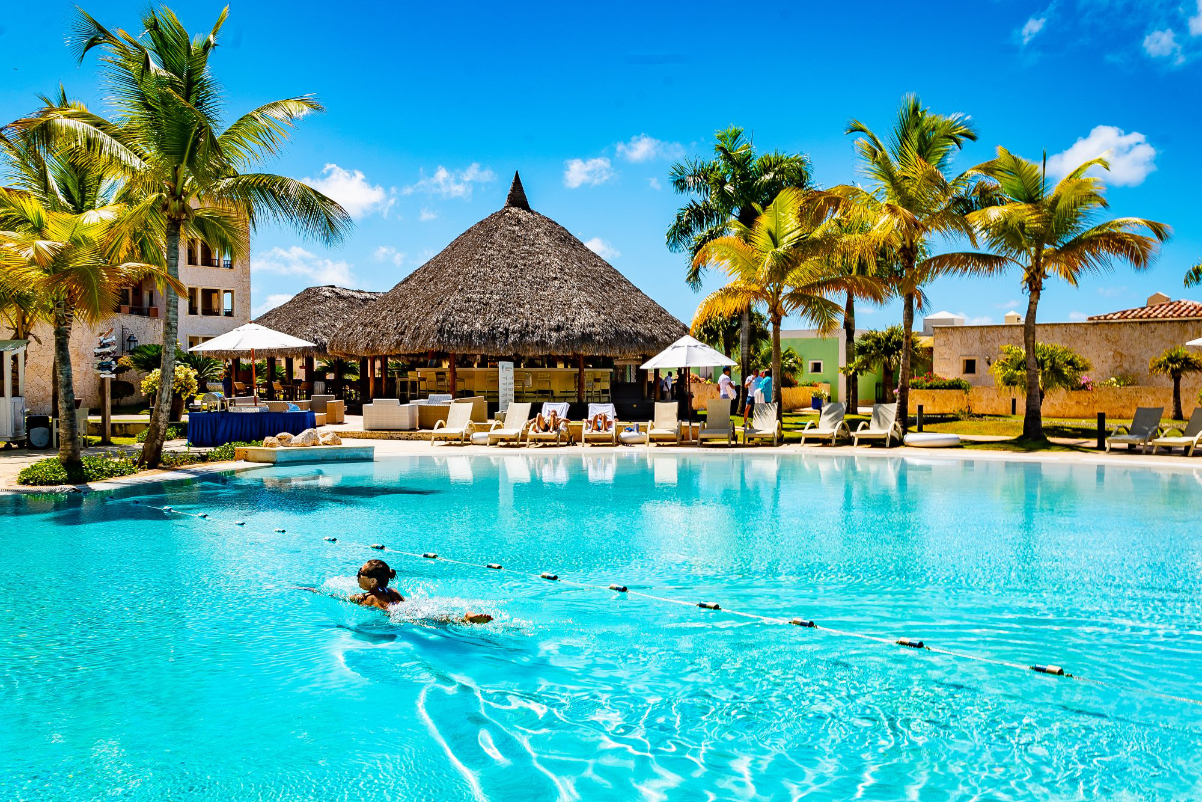Skift Take
Sports Illustrated's play for hotels could prove a winning brand extension. But its resorts risk becoming an also-ran if their operations aren't well coached.
Iconic magazine Sports Illustrated first lent its brand name to a hotel venture in late 2022, when its resort opened in Cap Cana in the Dominican Republic. Yet the forces behind Sports Illustrated Resorts aim to expand its footprint relatively quickly.
The resort brand is a creation of Experiential Ventures Hospitality and Authentic Brands Group. They invested about $3 million to renovate and rebrand a 150-room hotel — the Ancora Cap Cana, owned by Cap Cana Development — to create a vibe for sports fans.
Earlier this year, Kituwah, the development arm of the Eastern Band of Cherokee Indians, agreed to invest more than $300 million in Sports Illustrated Resorts. It took a page from the experiential hospitality playbook of the Seminole Tribe, which since 2007 has been scaling up the Hard Rock brand worldwide.
Kituwah is spending $75 million a year to build four Sports Illustrated resorts from scratch over four years. Its 50% equity control of Sports Illustrated Resorts makes it the largest equity holder.
Its first hotel is planned to open by late 2025 in Tuscaloosa, Alabama, home to the football powerhouse University of Alabama. Another is set to open in Orlando in 2024.
The joint venture is also in “serious” talks about a spot in Ann Arbor, Michigan. It’s also looking at Sevierville, Tennessee, where Kituwah owns the “Smoky Gap” tourist attraction by “Exit 407: Gateway to Adventure.”
The investors hope they can make Sports Illustrated Resorts as successful as the late Jimmy Buffett’s Margaritaville hotels.
Valuing the Sports Illustrated Brand
At first glance, it feels like Sports Illustrated may be a mismatch of a brand for the resort concept. Most people who feel an affinity with the brand are probably over 45.
Yet the resort brand emphasizes intense physical activity. Amenities include surfing simulators, rock climbing, and super-sized gyms, which are more likely to be used by Gen Z and Millennial audiences.
Chris Schroeder, CEO of Experiential Ventures and of Sports Illustrated Resorts, said he also had a similar thought about the brand until he saw the “massive” crowds attending Sports Illustrated circuit parties around major sporting events like the Superbowl and the Las Vegas Grand Prix.
An SI executive claimed on LinkedIn that the editorial brand’s swimsuit edition alone has a global audience of 10 million. As a tie-in, the 2023 edition of the magazine’s swimsuit issue was partly shot at the Cap Cana resort.
Resorts to Offer Experiential Hospitality
Another risk: Building higher-end resorts in university towns, which typically have several low seasons. Weekly games during sports seasons may draw high-paying crowds on weekends, but the rest of the year might be quiet.
Many university towns fail to deliver high average daily rates, so they tend to attract limited-service hotels. Sports Illustrated Resorts must be operationally efficient and command pricing power to make the numbers work.
Schroeder’s team plans lots of side shows to keep the visitors coming, such as hosting Sports Illustrated awards for local high school and university athletes and corporate events and conventions.
Many of the U.S. resorts will also have an “SI Experience” area for kids, which will be a mini-amusement park with virtual reality machines, zip lines, and water rides.
To help make the economics work, most of the U.S. resorts will include timeshares tapping the experience of vacation ownership operator Travel + Leisure Co. and branded residential condominiums.
Fast Growth Versus Consistency
The joint venture believes it can charge a premium rate by providing a distinctive experience. Present at every property is a quality gym and what executives call SI Stadium, a sports bar and grill that can double as an event space.
“When you walk into the lobby, we have what we call a ‘coach’s corner’ with a staff member who’s a bit like an excited Wal-Mart greeter,” Schroeder said. “Our version of a concierge will be someone who really loves the city and the sports of the city and will greet guests in an area decorated almost like a locker room. We’ll make it fun to learn about the area and the hotel.”
Sports Illustrated Resorts is flexible in how it works with partners.
“It can be everything from what’s called a joint venture partner to simply providing a sublicense to an owner who wants to rebrand their existing property or to build a new property and use their own management company,” Schroeder said.
That flexibility may enable the joint venture to scale up quickly.
However, an inconsistent approach to ownership and operations may lead to inconsistencies in service quality. The joint venture’s mix-and-match approach to amenities may confuse its repeat guests who get different things at different locations.
Overall, Sports Illustrated Resorts has a compelling offensive plan. But there may be an upper bound on high fans will pay to stay if it doesn’t execute well on its game plan.
Daily Lodging Report
Essential industry news for hospitality and lodging executives in North America and Asia-Pacific. Delivered daily to your inbox.
Have a confidential tip for Skift? Get in touch
Tags: branding, brands, colleges, future of lodging, lifestyle branding, resorts, sports, sports tourism, universities
Photo credit: A pool at the Sports Illustrated Resorts Marina & Villas Cap Cana in the Dominican Republic. Source: Sports Illustrated Resorts.
